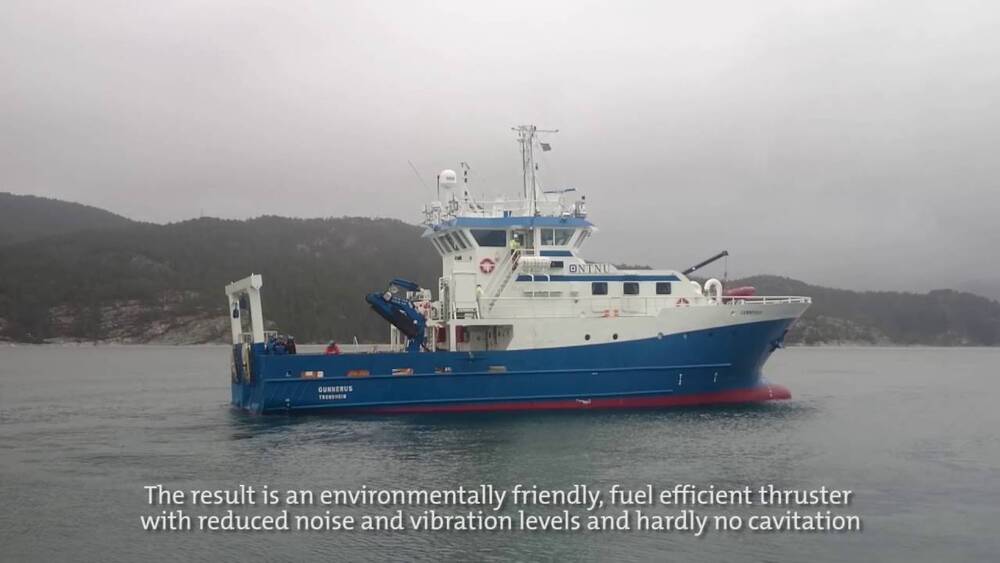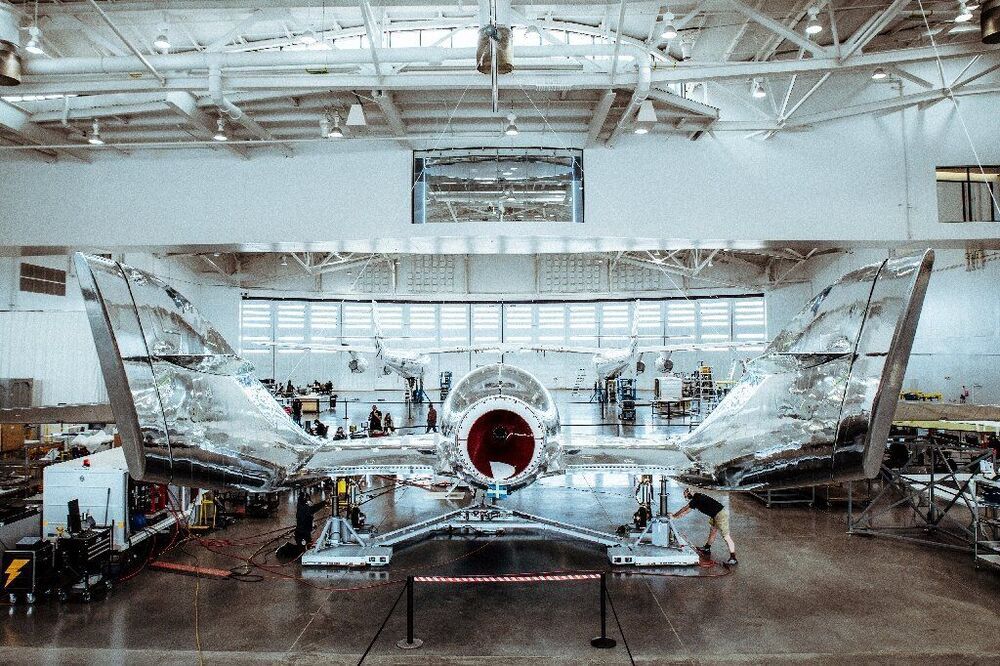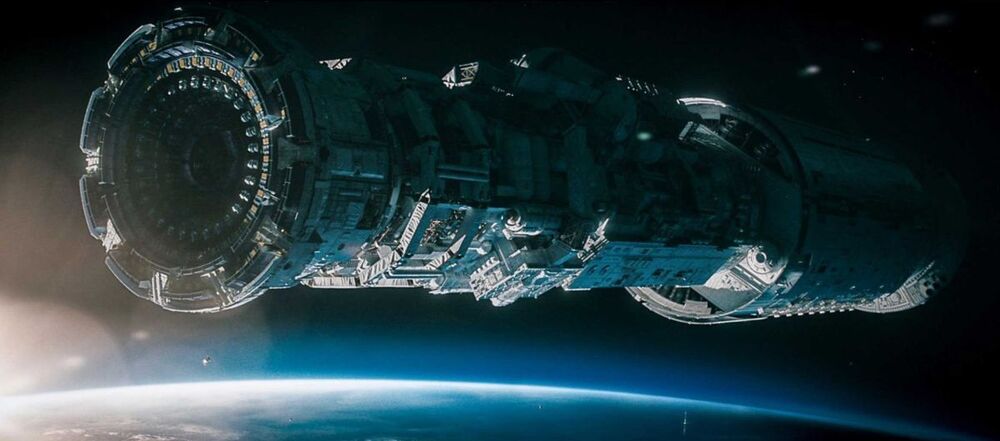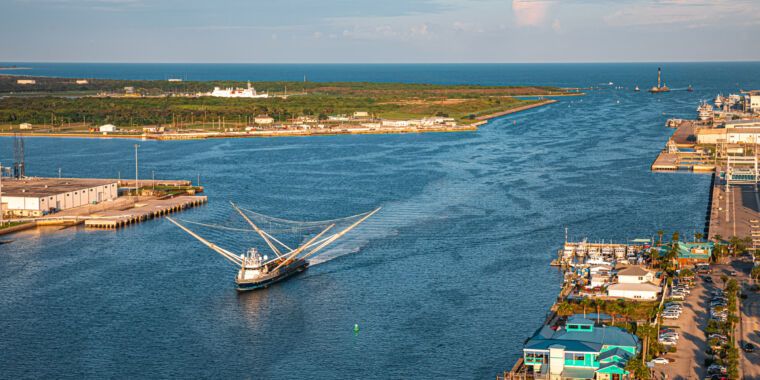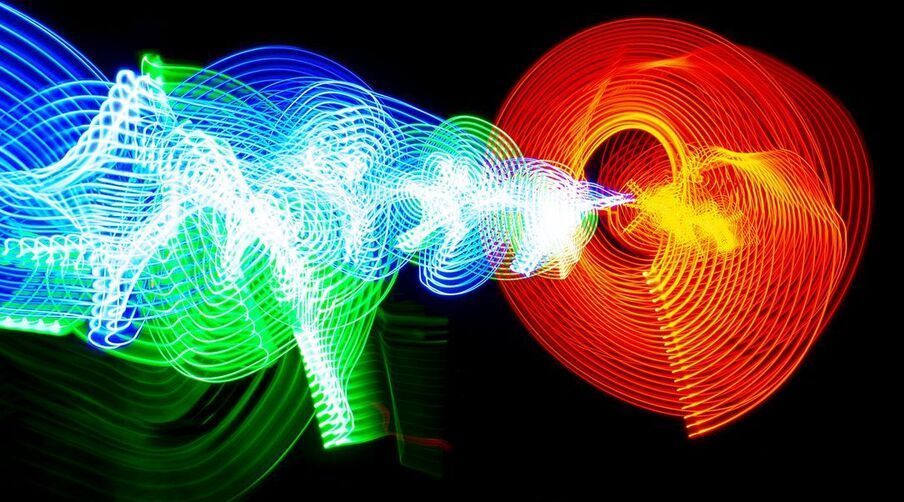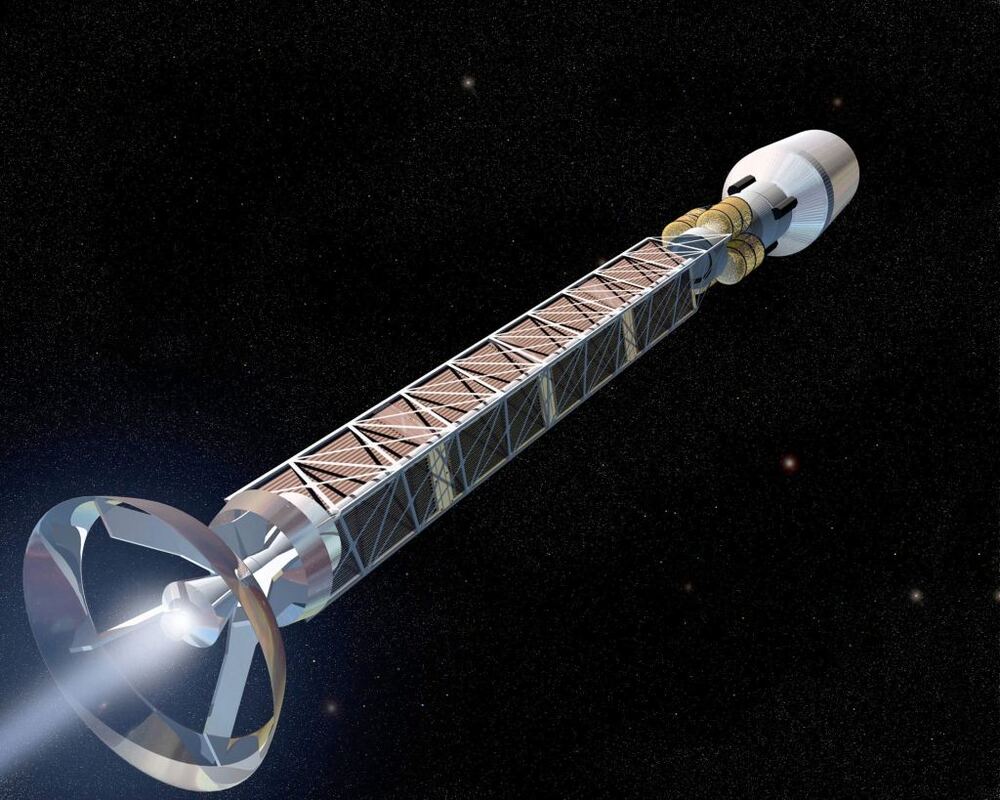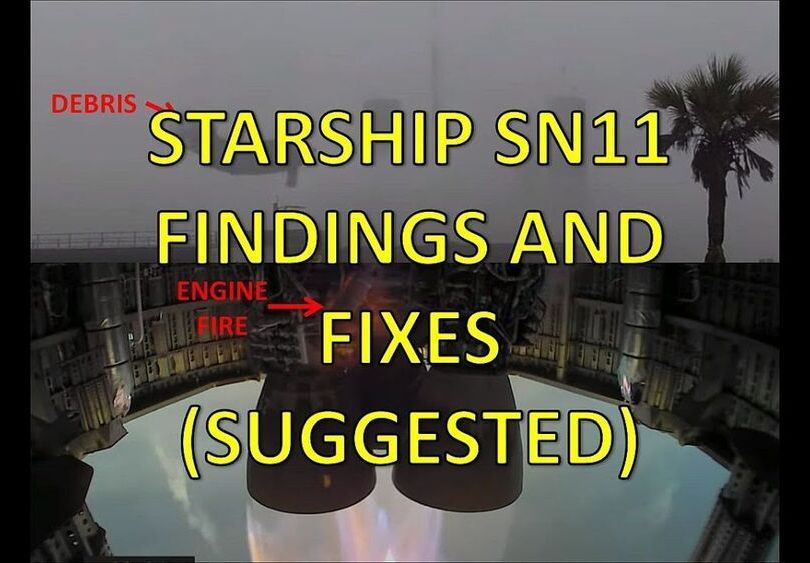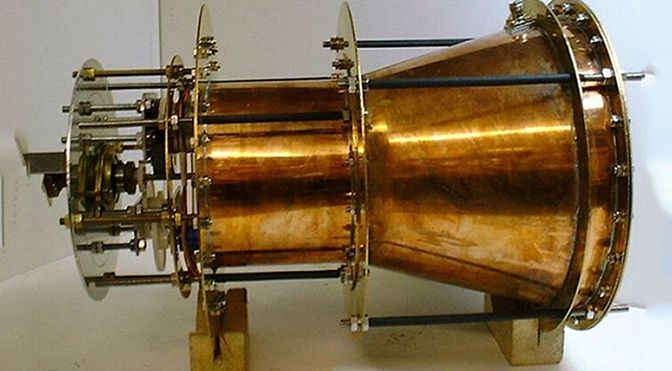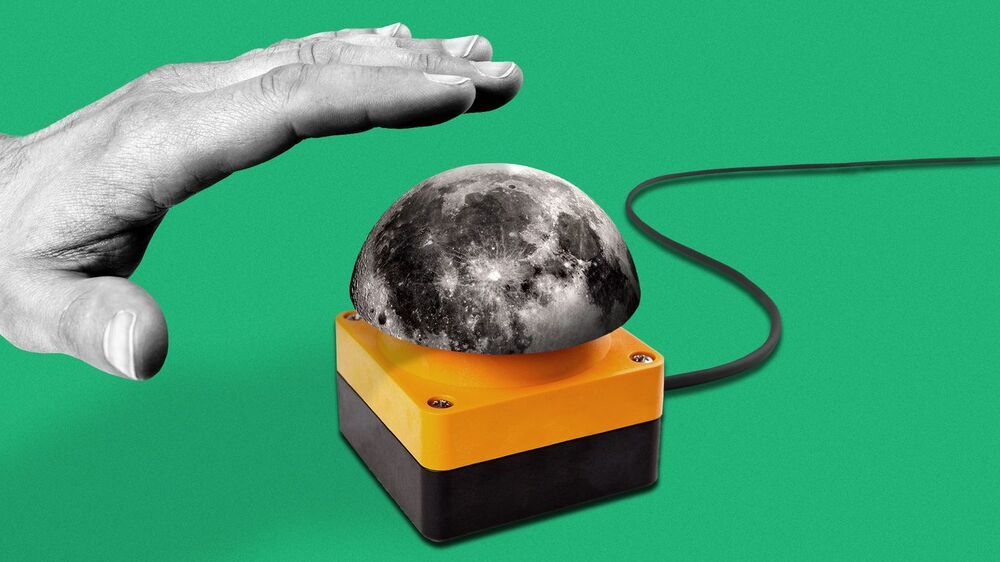Permanent magnetic motors circa 2014.
The AZ-PM thruster is the latest in a range of Rolls-Royce propulsion products using its permanent magnet technology. This technology is based on electric drive where the motor is in the form of a ring round the propeller. The moving part of the ring is a rim around the propeller blades which carries a series of strong permanent magnets. The rotor, fitted within a series of magnets, turns within an outer ring which form the stator.
When current is supplied to the motor from the variable frequency power supply the electromagnets are excited in a particular sequence and the resulting magnetic fields interact with the field from the rotor magnets creating a torque that turns the rotor and its propeller blades.
At the centre of the thruster the propeller blades are joined to a hub, which has two functions; to carry the bearings taking propeller thrust and provide radial location of the rotor, and to improve the hydro-dynamic efficiency of the thruster. Loads are transferred to the stator through struts. Both rotor and stator are sealed against water ingress and operate fully submerged.
Rolls-Royce PM technology is flexible, and is currently applied in this integrated propeller drive form to tunnel thrusters (TT-PM) and azimuth thrusters (AZ-PM). Other versions in which the PM rotor is arranged to turn an output shaft provide a high torque, low speed, drive for winches.
Among the advantages of this PM thruster technology are high efficiency (at nominal speed) over the entire speed range, leading to low thermal losses and eliminating the need for separate cooling systems of the submerged motor. Thrusters are compact and robust, and require less space within the hull. They are simple, with far fewer components than geared thrusters and are also quieter, with reduced structure and airborne noise. Learn more about Permanent Magnet Thrusters http://www.rolls-royce.com/products-and-services/marine/product-finder/propulsors/azimuthing-thrusters.aspx#section-product-search
